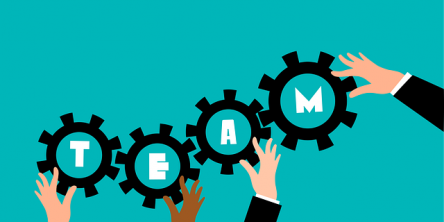How to Streamline Your Employee Onboarding Process

Effective employee onboarding is essential for organizations to set their new hires up for success. A streamlined onboarding process helps employees quickly acclimate to their new roles and contributes to higher productivity and improved retention rates. In this post, we will explore some practical strategies businesses can implement to smoothen employee onboarding.
So, if you are planning to streamline your employee onboarding process and make it a great experience for your new employees, you must follow these strategies. Read on and gain valuable insights.
1. Develop a Clear Onboarding Plan:
A well-defined and organized onboarding plan is crucial for ensuring a smooth transition for new employees. This plan should outline all the necessary steps and provide clear instructions on how the onboarding process will unfold. Employers can establish expectations from day one by mapping out key milestones, responsibilities, and timelines.
2. Digitize Onboarding Documentation:
Transitioning from paper-based documentation to digital format can significantly expedite onboarding while reducing administrative burdens. Adopting an electronic system enables new employees to complete forms such as tax documents, benefits enrollment, and employment agreements online at their convenience. This digitalization eliminates potential delays caused by manual data entry processes.
3. Pre-Onboarding Communication:
Preparation is vital in streamlining employee onboarding. Engage with new hires before they start by sharing any necessary information or resources they may need beforehand. For instance, providing access to company policies or a pre-onboarding orientation video assists in jumpstarting the learning curve while also making them feel welcomed and prepared for day one.
4. Personalized Welcome Email:
A warm welcome sets the tone for a positive onboarding experience. Instead of sending mass welcome emails laden with impersonal information, consider sending personalized messages that greet each new employee by name and briefly describe what they can expect during their first week. This approach creates a human connection right from the start.
Read more: Employee Protection: Show that You Care
5. Assigning an Onboarding Buddy/Mentor:
Pairing new hires with an experienced employee can significantly facilitate onboarding. This mentor or "buddy" can provide guidance and support, be a go-to person for questions and concerns, introduce the new hire to key colleagues, and offer insights into company culture. This one-on-one connection enhances integration while fostering camaraderie.
6. Standardized Training Materials:
Standardized training materials ensure consistent information delivery and save valuable time during the onboarding process. Employers should create well-structured training modules or digital guides covering essential information relevant to the role and the organization. This consistency helps eliminate discrepancies and avoids duplicative efforts.
You May Also Like: Employee Management System: Why Your Business Needs One?
7. Engage in Interactive Onboarding Activities:
The traditional approach to employee onboarding often includes long, monotonous orientation sessions filled with PowerPoint presentations. Instead, consider incorporating interactive activities, like team-building exercises or hands-on training sessions tailored to each team's objectives. These engagements keep new employees engaged while promoting teamwork and building relationships.
8. Continuous Feedback Loops:
Implementing continuous feedback mechanisms during onboarding allows organizations to address issues promptly and make necessary improvements. Regular check-ins with new hires regarding their experiences during the first few weeks allow employers to identify areas of improvement proactively. Managers should encourage open communication and actively seek feedback from new employees.
9. Evaluate Your Onboarding Process:
Evaluating your current employee onboarding process is critical to uncovering bottlenecks or areas that continually require improvement. Collecting feedback from managers, new hires, human resources personnel, and other stakeholders provides valuable insights into its effectiveness, enabling businesses to refine their approach accordingly.
Conclusion:
Streamlining the employee onboarding process takes careful planning and a commitment to ongoing improvement. By implementing these practical strategies - developing a clear plan, digitizing documentation, pre-onboarding communication, personalized welcome emails, assigning an onboarding buddy/mentor, using standardized training materials, engaging in interactive activities, establishing continuous feedback loops, and regularly evaluating the process - organizations can ensure a smoother and more effective transition for new hires. Ultimately, a streamlined onboarding process leads to happier, more productive employees ready to impact their respective teams immediately.
Similar Articles
Explore how gamification transforms employee recognition, boosting engagement, productivity, and teamwork with interactive, rewarding systems. Learn its benefits and challenges.
The movement toward remote work has brought many changes in the way teams operate-from flexibility to a hindrance in productivity, communication, and time management.
Lead your remote call center team to success with proven strategies for boosting teamwork, productivity, and customer satisfaction using the latest tools.
Fostering a strong team identity and preserving collective memories are essential for boosting morale, enhancing collaboration, and reducing turnover.
Remote working means that developers can collaborate from anywhere in the world. But do you know the right tools to make this work?
If you're running a delivery business, you know how important efficiency is. You're managing drivers, taking orders, and trying to deliver on schedule. How can you improve operations and overcome inefficiency?
Ever wondered why some workplace teams seem to click effortlessly while others struggle to find their rhythm? Well, it turns out there's some serious science behind the magic of effective team building.
For employees working in hybrid work models, effective communication is key to getting things done. And when you’re juggling tasks and people from different locations, that task becomes even more difficult.
You may have been a great leader pre-COVID times but after the pandemic passes, things are not going to go back to normal as the pandemic has changed how the world functions today which is going to exist even after things get back to normal.








